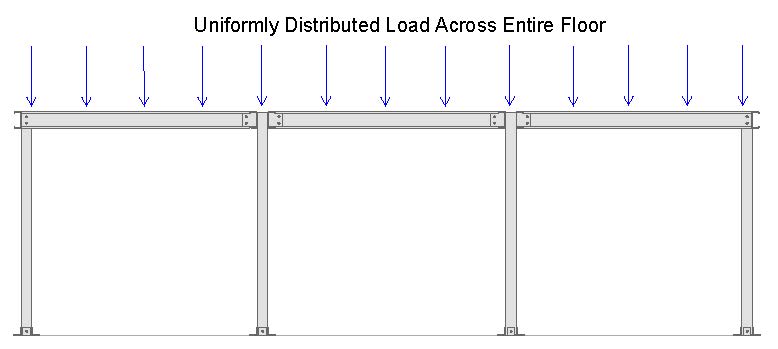Now that you know that you need a mezzanine floor, the first thing you want to find out is how much stuff you I put on the floor. In other words how much weight you can put onto it.
The maximum amount of weight you can put onto a mezzanine floor is controlled by the load rating, or Kpa rating, of the floor.
Mezzanine floors in general can support 1.5 kpa to 6 kpa. This means they will support from 150kg per square metre up to 600kg per square metre, evenly distributed.
Below is table listing different weight capacities and ratings for mezzanine floors
Mezzanine Floor Kpa Rating | Weight Capacity per Square Metre (Evenly Distributed) |
|---|---|
1.5 Kpa | 150kg |
3 Kpa | 300kg |
3.5 Kpa | 350kg |
4 Kpa | 400kg |
5 Kpa | 500kg |
6 Kpa | 600kg |
As mentioned above the Kpa rating or weight capacity is based on an evenly or uniformly distributed load, which across the entire floor area. This is also called a uniformly distributed action.
There is also another factor called a concentrated action. This is based more on a point load. In other words, it is a load on the floor in a smaller or concentrated area. This is more derived from the actual specific use of the floor. ie. Where is it, and what is it being used for. For example, an office, a laboratory, for general areas etc.
Things that can help a floor’s load bearing capacity.
The best way for you to buy a mezzanine floor that will work for you is to first work out what you are going to put on the floor. Is it for storage of goods etc, or is it to be used as an office. Once you know how you are going to use it, then the load rating or the load bearing capacity can be calculated when designing the floor.
The load bearing capacity of a mezzanine floor is calculated by using the known strength of the steel components as well as the maximum deflection, vibration and raking forces permitted by the standards.
Strength of Steel – each different component has an mpa rating which the force required to make the steel fail.
Deflection – In simple terms, this is a maximum amount of how much a steel member will ‘sag’ when observed across the floor assembly.
Vibration – This is measure as a point load when 100kg of weight is applied to any steel member in the floor. It must be under the maximum amount stipulated by the Australian standards. This is a very important calculation and must be done for all mezzanine floors. If not done properly, problems such as excessive movement and bounce can occur.
Raking force – This is the force against the posts mainly that is stopping the floor from falling over and collapsing. It is the force needed to keep the floor upright.
As you can see, there are several factors that need to be calculated in the design of a mezzanine floor. If you need any advice on your mezzanine floor, please contact us.


